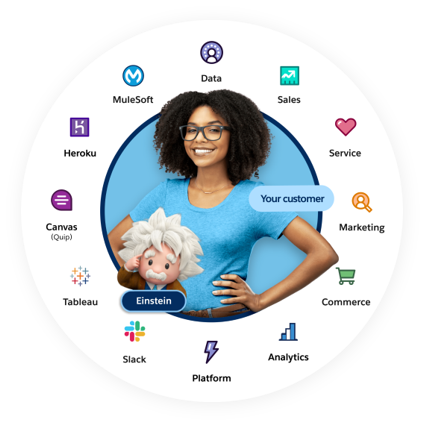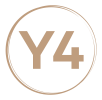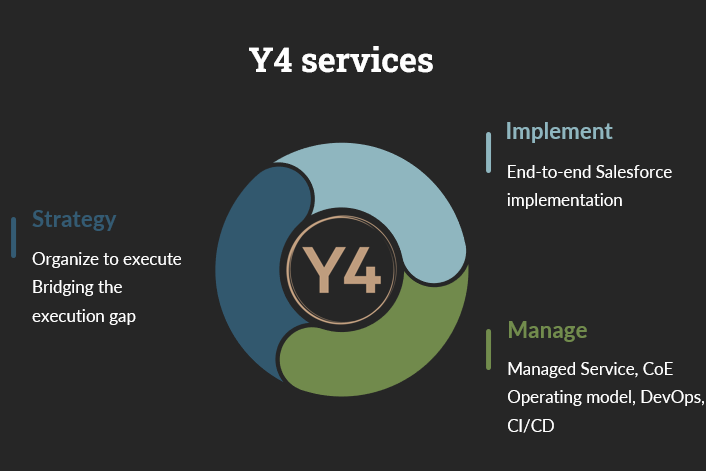We apply our extensive experience managing and executing change for our clients to close the execution gap, establishing robust transformation programs that drive value at scale. With our clients we co-create actionable approaches to deliver across people, processes and technology. Successful program co-creation includes some core elements that can be delivered as parts or in their totality.
Strategy
Strategic Planning & Advisory
Identify North star and business value models around customer & commercial excellence, emphasizing industry trends and best practices.
Business Process & Capability Mapping
Translate the vision and models into customer journeys, business processes and to-be capability maps to deliver on the strategic objectives.
Organizational Readiness & Change
Identifies key change needs, assesses readiness and prioritizes roadmap to establish program governance and operating model. We focus on enabling your people to lead and own the transformation.
Implementation
Omnichannel Stakeholder Experience
Build digital experiences that focus on people-centric processes and making the employee and customer effort as low as possible.
Rapid & continuous capability delivery
Solution blueprinting, rapid prototyping and continuous delivery to execute on roadmap at speed. Think big, start small and scale fast.

Manage
Managed Service
Unlock the full potential of Salesforce with our Managed Services. As your business evolves, so should your Salesforce solution. We’re here to ensure your Salesforce instance is always optimized for your current needs with scalability in mind. Our team conducts thorough audits, identifies areas for improvement, and ensures proper standards are met for backlog prioritization, why and how new functionalities should be delivered, CI/CD and production setting. With a focus on continuity, knowledge sharing, and cost optimization, we’re your partners in maximizing Salesforce’s benefits.
CoE & Operating Model
Unlock the full potential of your Salesforce program with Y4’s Center of Excellence (COE) and Operating Model consulting services. We understand the common challenges organizations face when aligning their IT initiatives with business processes, such as accumulating technical debt, fostering knowledge sharing, and executing service delivery effectively. Our approach to CoE provides a central governing framework, embracing Agile methodology and continuous delivery to disrupt traditional operational models. By aligning leaders, reducing misalignment, creating trust between IT and Business, and implementing an effective operational model, we help you consolidate activities and drive continuous value in your Salesforce program. With community-based design thinking and knowledge-sharing mechanisms, we ensure that your organization operates at its highest potential, delivering business success and innovation.
DevOps & CI/CD
We deliver quality, secure, and reliable solutions for internal and external use, using the principle of rapid prototyping, continuous deployment, delivering value at a fraction of the time and cost. We specialize in the Salesforce domain of DevOps & CI/CD. We follow modern, fast and scalable principles for innovating and deploying software and applications to an organization’s users.
CUSTOMER-CENTRIC BUSINESS PROCESSES
Moving from product-centric to customer-centric business processes
- Design Thinking: Start by understanding your customers and design experiences that cater to their needs and preferences. This is exemplified by companies like Uber, and on a smaller scale Danish LegalDesk who respectively revolutionized the taxi and legal industry, both through a customer-centric approach.
- Minimizing Customer Effort: The secret to customer loyalty isn’t just about creating mind-blowing experiences but also making it effortless for customers to get what they want. The less effort required, the more likely they’ll return.
- Balancing Employee and Customer Effort: It’s crucial to strike a balance between reducing employee effort and customer effort. Making it easy for both employees and customers is the recipe for success.
- Connected Efforts: Employee and customer efforts are interconnected. By reducing one, you indirectly reduce the other, creating a positive feedback loop.
ONE TEAM ALIGNED AROUND THE CUSTOMER
Break down silos, enabling teams across the company to deliver the full power of your company to the customer.
- One Team Aligned Around the Customer: The focus here is on shifting from traditional organizational structures, where teams operate in silos, to a more customer-centric approach. In this new model, the entire organization, including leadership, functions as one team with a common goal centered around the customer.
- Renovate vs. Evolve Mindset: While optimizing existing processes (renovate) is important, the emphasis is on evolving toward customer-centricity. The traditional approach involved optimizing individual functions, but in a customer-centered world, it’s about breaking down silos and making the whole organization serve the customer effectively.
- Listening to the Customer: Instead of a top-down approach where leadership dictates strategies, the focus is on listening to the customer. This involves capturing signals from the front lines and enabling every employee to have a complete view of the customer. The goal is to respond to customer needs with the full force of the organization.
- Importance of Frontline Employees: Frontline employees, like account executives, sales reps, customer service reps, sales engineers, and first-line managers, are crucial in this customer-centric approach. They are the closest to the customer and need the right tools to serve them optimally.
LEANEST POSSIBLE TECHNOLOGY STACK
Building the leanest technology stack is essential to enable your organization’s transformation. It’s about aligning technology with the customer-centric approach.
To create effortless experiences for your customers and encourage their loyalty, you need to streamline your technology infrastructure.
- Organizational Structure and Empowerment: Your organizational structure plays a fundamental role in achieving customer-centricity. Empowering front-line employees and fostering a culture of customer-centricity are key components of this transformation.
- Technology Silos vs. Innovation: Many organizations spend a significant portion of their IT budget on maintaining existing systems (tech debt) and governance. The goal is to flip this allocation, with a focus on innovation. This doesn’t mean just buying more technology but rather thinking about IT as a business partner and empowering the business to optimize the customer experience through no code or low code solutions.
- Lean and Agile IT: Moving towards a lean technology stack involves getting rid of multiple versions of software, creating reusable components, and building flexible technology solutions that align with the organization’s needs. This not only reduces costs but also frees up capital for innovation.
- Trailblazer Movement: Encouraging business units close to the customer to become “trailblazers” by using no code or low code solutions empowers them to optimize the customer experience independently. This approach drives efficiency and innovation.
SENSE AND RESPOND
Building amazing customer experiences is essential, but it’s equally vital to adapt quickly as customer needs and preferences evolve.
- Earning Customer Data: To stay ahead, organizations must earn customer data through feedback and engagement. Data is valuable because it fuels insights and drives better experiences, and smarter decisions.
- Continuous Improvement: Achieving customer-centricity means constantly improving every touchpoint of the customer journey. It’s not just about competing with industry peers but also outperforming the customer’s last (effortless) experience, whether it was with your organization or another.
- Spinning the Flywheel: The concept of a “flywheel” represents the cycle of earning data, leveraging it for insights, creating better experiences, and continuously earning more data. This cycle is the core of business success in the fourth industrial revolution.
- Evolve Mindset: Shifting from renovation to evolution means focusing on creating effortless buying experiences and viewing the customer from the outside in. It’s about asking the customer’s opinion in every internal meeting and permeating the evolved mindset throughout the organization.

